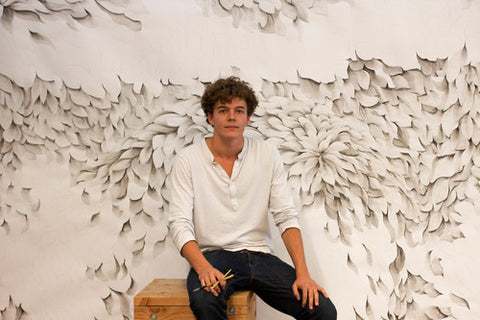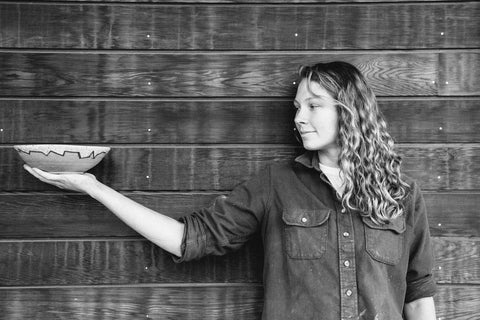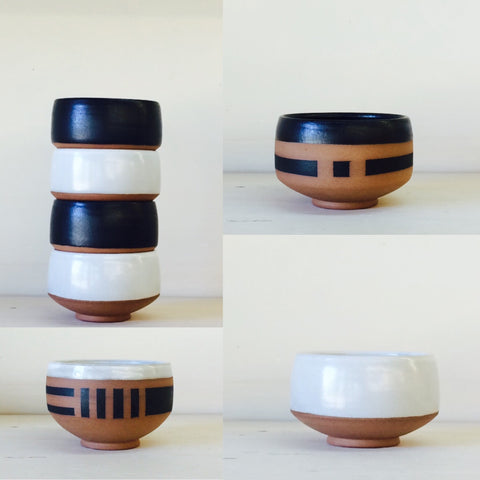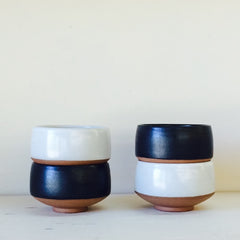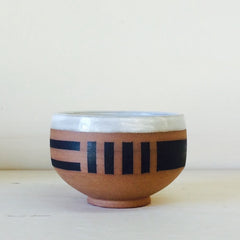Collections
2024 Holiday Gift Guide
Here are our staff's hand-selected picks for gifting thoughtful
tea times to your loved ones this season 💚
View collection

Asemi Ceramics
View collection
Austin Danson Ceramics
Mizuba Tea Co. || Austin Danson
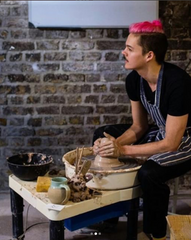
These sublime, artisan tea bowls are uniquely hand-crafted by Los Angeles-based artist Austin Danson. Distinctly a work of attentive craftsmanship and skill, Austin exhibits a variety of tea bowl styles. His work explores traditional Japanese and Korean forms, in addition to evolving his work with different glaze and firing techniques.
Whisking, sipping, and appreciating Mizuba Matcha green tea from an Austin Danson chawan is an unparalleled experience and one we are very proud to share with you.
Shop
View collectionBestsellers
Discover exceptional Japanese matcha and tea at Mizuba Tea Co. From vibrant Daily Matcha to rare single-cultivar selections, our bestsellers showcase authentic flavors direct from Japan's finest tea regions. Experience traditional stone-milled quality that elevates your daily ritual with every sip.
View collection
For Beginners
View collection
Gifts for Experts
View collectionGoogle Collection
View collectionHandcrafted Teaware
Artist Exclusive Chawan Tea Bowls

Hōjicha
Pure Japanese Hojicha
Hōjicha, also spelled houjicha or hojicha, is a world unto itself in Japanese green tea. Unlike Japan's ubiquitous steamed green teas, houjicha teas have been roasted! Take this opportunity to try different styles, from a traditional classic (Kyô-bancha), to a modern, elegant blend (chamomile houjicha), to our delicious powdered version for your lattes & recipes!
View collection
Jinsui Ceramics
View collectionKinto
View collectionKoicha Matcha
View collectionLimited Edition
View collection
Loose Leaf Tea
Loose Leaf Tea
Every Mizuba tea you taste conveys the passion of the producer. You can truly taste the difference versus industrialized commodity tea. Every tea we purchase supports small, independent tea producers in Japan.
Looking for teaware to brew your exquisite new tea in? Check out the new teapots & traditional tea tools in our teaware collection.
View collection
Matcha Powder
Enjoy free shipping on all orders over $85
(US only)
Matcha Green Tea Powders
Every Mizuba tea matcha you taste conveys the passion of the producer. You can truly taste the difference versus industrialized commodity tea.
Every green tea powder purchased supports small, independent tea producers in Japan.
Our matcha is non-GMO, certified radiation-free, certified heavy metal-free, and 100% direct from Uji, Japan.

Mizuba x Tsuji San Matcha
View collectionNankei Ceramics
View collection
Origami Tea Tools
View collectionShowstoppers
Extraordinary gifts that make a lasting impression. Our most luxurious offerings include rare ceremonial matcha, artisan-crafted teaware, and exclusive gift sets that embody the pinnacle of Japanese tea culture.
Perfect for:
- Celebrations and milestones
- The ultimate tea lover who appreciates the finest quality
- Making an unforgettable statement of appreciation
Signature Selections
Impressive gifts that strike the perfect balance between thoughtful and luxurious. This curated selection features premium matcha teas, handcrafted teaware, and elegant gift sets that will delight any tea enthusiast.
Perfect for:
- Special occasions and milestone celebrations
- Impressing the discerning tea connoisseur
- Gifts that show genuine appreciation and care
Single Cultivar Teas
View collection
Tea Sachets
View collection
Thoughtful Picks
Delightful tea gifts that show you care without breaking the bank. From artisan tea accessories, small-lot and heritage loose leaf teas, to premium matcha, these carefully curated picks make perfect stocking stuffers, hostess gifts, or thoughtful gestures for the tea lover in your life.
Perfect for:
- Stocking stuffers and small tokens of appreciation
- Introducing someone to the world of premium Japanese tea
- Pairing with a larger gift for an extra special touch
Wolf Ceramics
Mizuba Tea Co. || Wolf Ceramics
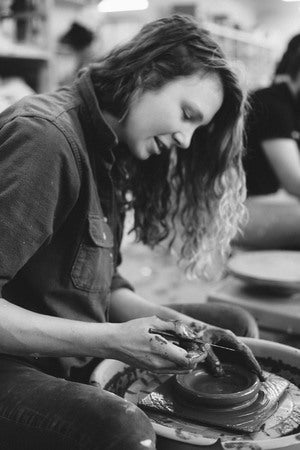
Photo by Matthew Thornton
With the launch of our beautiful new chawan line, we thought we'd introduce you to the exquisite artist behind them. Meet Sarah Wolf of Wolf Ceramics, and enjoy her musings behind each artful tea bowl.
Tea bowls. How do they speak to you?
Wolf: I love making tea bowls. They’re attractive to me both because of their aesthetic, and because of the experience of drinking from them. The aesthetic attraction comes from having a beautiful bowl shape that's elevated by a small and delicate foot. The elevated foot makes the bowl and its contents seem precious in some way. The most intuitive way to drink from a tea bowl is to cradle it between both hands. Not only is it soothing to hold its warm body between your palms, but it forces the user to stop whatever else they may be doing – and reminds him or her to be present in the experience of the tea. You literally can’t do something else at the same time, if it takes both hands to sip from the bowl.
Describe your ceramics journey. What do your pieces say about how far you’ve come, and what do they bring from your past?
Wolf: Ah! I could say so much! When I was a kid I would play on the floor of my mother’s studio (she’s an artist, a painter). She would let me draw on the floor and make a mess. My favorite medium at the time was Popsicle sticks and hot glue. I was always interested in architecture, and I loved to make tiny houses. In high school, I became interested in ceramics. I actually became rather addicted, but never thought I would make a career of it. I studied chemistry and geology at Whitman College, with the idea that I might go on to a graduate program in architecture, but I always was practicing ceramics on the side...
I later came to realize that one of the most attractive things to me about architecture was the thought of actually building things! But most architects spend the majority of their time in front of the computer these days, which wasn't for me.
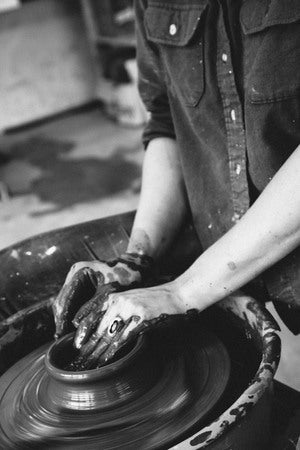
Photo by Matthew Thornton
After college, I moved to a homestead in the San Juan Islands in Northwest Washington. I wanted to learn useful skills, and I wanted to use my hands. Toward the end of my year in the San Juans, I came back to ceramics. My time there was spent working hard to grow good food, and to care for a piece of land with, and for, good people fulfilled a need within me to be using my body and creating something useful in so many different ways. Making functional ceramics fulfills this need in a very similar way. The process is physically demanding, dirty, even delicate at times – and very satisfying. As I send more and more work out into the world to be used, I feel more and more connected the the community of people who use them.
Over the past two years I have dedicated myself to the practice of making ceramics, and in doing so, I have gradually found my own voice and aesthetic. I think that creativity can sometimes be enhanced by working within restraints. The decision to use only black and white glaze in my current work pushes me to make very intentional choices about form, pattern, line, and negative space. Even within these constraints there are limitless possibilities! I literally lie awake at night with new ideas flooding my mind. Sometimes I have to get out of bed and go draw them.
We love the thought of creativity within boundaries - seldom spoken of, but it requires discipline! So, what is your relationship with clay?
Wolf: The process of working with clay for me is most often meditative... though if I sit down at the wheel to work on a day when I am not feeling right, it can also be incredibly frustrating.
My background in geochemistry also brings a more scientific and chemical side to the ways that I think about clay and glaze. It is important to me to have an understanding of the processes that take place in the kiln, and the ways in which I can affect these processes.
What excites you most about making tea bowls?
Wolf: When I make a tea bowl, I am most excited by the thought that someone will use it, and the possibility that their experience of drinking from that tea bowl might somehow have a positive effect on their quality of life at that moment.
What is your relationship with tea?
Wolf: I drink about 2-4 cups a day, and I often put milk and honey in it. In the winter, I’d rather have a cup of tea than a cup of water. I often drink from a giant mug or jar, but if I drink from a tea bowl, its usually because I am sharing a pot of tea with another person.
We love the communal element of that. Can you describe your influences on your style?
Wolf: My surface design is affected by my love of architecture and my affinity for clean lines and pattern. My tea bowl forms are certainly affected by Asian aesthetics, but I definitely can’t claim to have a deep understanding of historical tea bowl traditions.
What do you hope a Sarah Wolf chawan owner might enjoy? Might appreciate?
Wolf: I suppose I would hope that one might have an experience similar to mine. I would hope that in holding a warm tea bowl with both hands, one might be drawn away from the rest of the day’s stresses for a moment...
































































